Research shows that alphabet instruction is most effective when we differentiate based upon student need.
And that makes sense, right? There’s no use in spending tons of time teaching an alphabet letter to a student who already knows its name and sound.
However.
If you’ve ever taught Kindergarten before, you already know that differentiating at the very beginning of the school year is a little tricky!
When your Kindergarteners enter your room on the first day of school, most of them aren’t ready to work independently yet!
And some level of independence is necessary for differentiation.
You can’t pull small groups if the other kids can’t complete an activity on their own. You can’t work one-on-one with a student if the rest of your classroom is devolving into chaos! ?
If you have an aide or another teacher in your classroom, that helps.
Generally, however, diving straight into differentiation at the beginning of Kindergarten is pretty tough.
At the same time, though, differentiating your alphabet instruction can be very necessary. You may have some students who don’t know any letters yet and other students who already know most or all of their letters.
Somehow, someway, you’ve got to meet all of their needs.
Will you meet every child’s needs ALL the time? No. But there are still steps that you can take to make differentiation happen – even if you’re doing mostly whole group instruction.
This post has 3 tips to help you do just that!
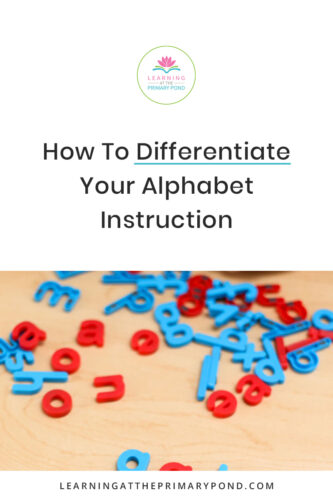
Tip #1: Ask, “What is the work for this student?”
I prefer to introduce the letters (2, eventually 3 per week) to ALL my students at the beginning of the school year.
When I introduce a letter, we cover all of the following:
- The letter’s name
- The letter’s sound
- Examples of words that begin with this letter
- Letter formation (capital and lowercase)
Even though you may have students that did well on your alphabet assessment at the beginning of the year, there may still be “work” for them here.
Perhaps they really need to work on how to form the letter properly. (In my experience, students who know their letters often still need to work on this.)
Maybe they can begin writing simple words (i.e. CVC words) that begin with this letter.
Maybe they can work on identifying words that END with this letter.
So when you’re introducing the letters for the first time, instead of worrying that it will be too easy for some of your students, ask yourself, “What is the work for this particular student?” You can make small adjustments to ensure that all students are learning.
Tip #2: Choose activities that can have different outcomes for different students.
Picture sorts are one of my favorite activities for introducing the letters.
After I introduce each letter, we will do a picture sort of A) pictures that do and do not begin with the letter, and/or B) pictures that begin with this letter and another letter that I’ve previously covered. Here’s an example:
All students can complete this activity. But you can adjust your expectations for different students.
Some students might complete the sort and be finished.
Others might complete the sort and draw additional pictures in each column or on the back (things that start with /t/ and things that do not start with /t/).
Others might complete the sort and then write the first letter for each picture underneath (for example, they would write the letter “t” under the tent” and the letter “l” under “log”).
Others might complete the sort and then use invented spelling to write the entire word under each picture (i.e. attempt to write “tiger” under the picture of a tiger).
You only prepare and introduce ONE activity. You can easily do this in a whole group setting. But the kids can all have different outcomes.
And you can apply many of these same ideas to other letter activities that you do with your students!
Tip #3: Use different levels of questioning to engage different students.
This strategy is one I use to teach all kinds of concepts – the alphabet and beyond!
When I’m planning out questions to ask my students, I plan to ask questions at different levels.
If I’m doing shared reading, for example, here are some examples of “print-based” questions I might ask in one lesson:
- Where is the picture, and where are the words?
- What’s the first word in this sentence?
- What’s the first letter in this word?
- What’s the first sound in this word?
- What capital letter do you see?
- What does this word say?
Would all of these questions provide a “just right” amount of challenge for all the kids in your class? No.
But that’s okay. Because some questions will be “just right” for certain kids, and some questions will be great for other kids.
You absolutely CAN differentiate during your whole group lessons, and using different levels of questions is one way to do that.
More Support
If you’re in need of more options, check out my free multi-sensory activities for Kindergarteners! Click here for that freebie!
If you need lesson plans, differentiation ideas, and leveled materials to teach phonics to your Kindergarten students, check out my phonics program, From Sounds to Spelling.
Happy teaching!

References
Piasta, Shayne B. 2014. “Moving to Assessment-Guided Differentiated Instruction to Support Young Children’s Alphabet Knowledge.” The Reading Teacher 68 (3): 202-211.


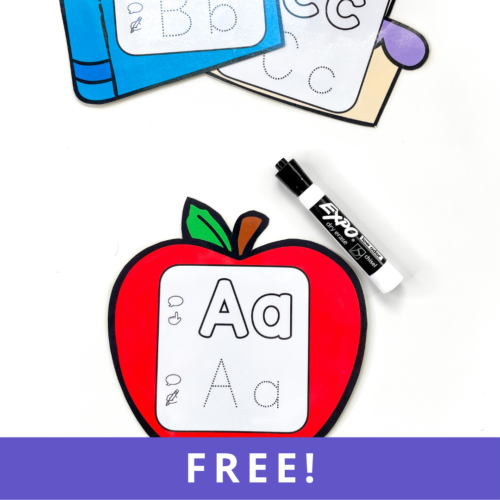
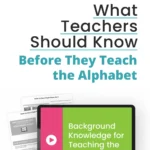

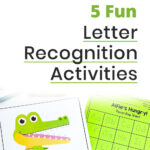

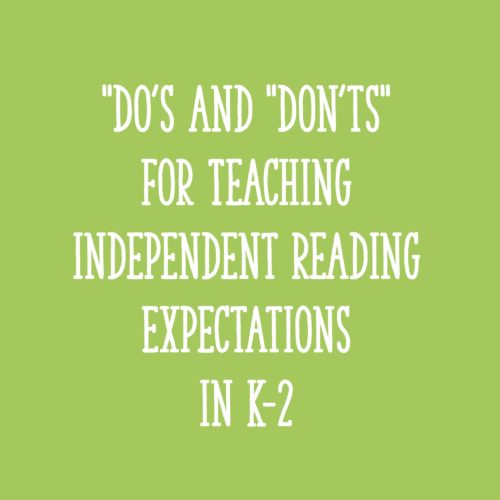
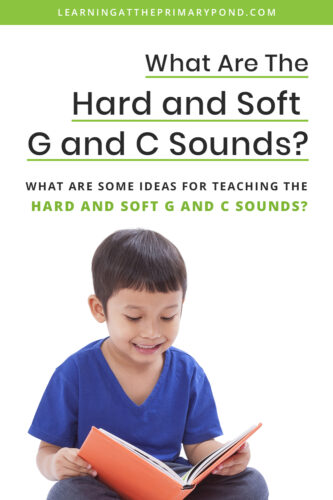






Thank you
You are very welcome! 🙂
Thank you for your very well organized information and teaching strategies. I am enjoying learning from you and looking forward to implementing your ideas.
Thank you, Karen! I am so glad that the strategies that I have shared, especially on how to differentiate your alphabet instruction, has been helpful to you! 🙂
Thank you. These strategies are so helpful as a jumping board of ideas for me to engage some of my more proficient learners, but at the same time not create a huge amount of work for myself in a busy classroom!
You’re so welcome, Alicia! My goal is to provide educators with ideas and resources to make their job easier! 🙂